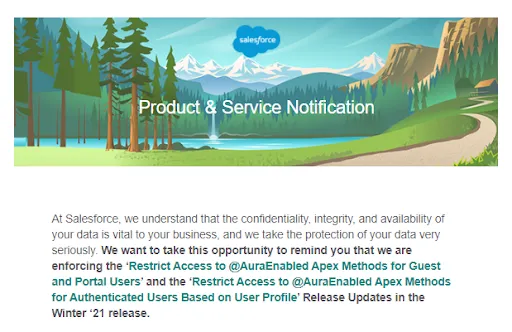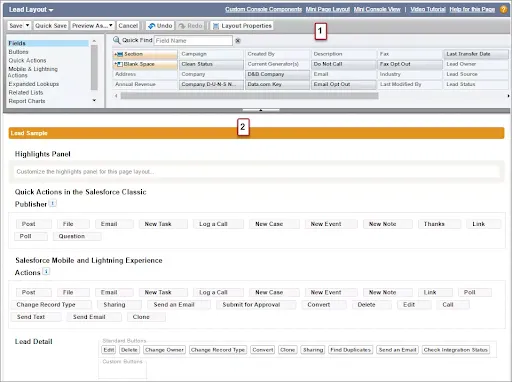5 Essential Steps for Successful CRM Implementation
A well-implemented customer relationship management (CRM) system serves as the foundation for improving customer relationships, streamlining sales processes, and increasing operational efficiency. Despite the clear benefits, many organizations struggle with CRM implementation and fail to get the expected return on their technology investment.

A well-implemented customer relationship management (CRM) system serves as the foundation for improving customer relationships, streamlining sales processes, and increasing operational efficiency. Despite the clear benefits, many organizations struggle with CRM implementation and fail to get the expected return on their technology investment.
The consequences of poor implementation can be severe: low user adoption rates, data inconsistencies across departments, and missed revenue opportunities. According to industry research, nearly 30% of CRM projects fail to meet organizational expectations, with implementation issues being the primary culprit rather than the technology itself.
This article outlines five essential steps that organizations must take to ensure a smooth, effective CRM implementation that delivers tangible business results and supports long-term growth objectives.
Define Clear CRM Implementation Objectives
Before selecting any CRM platform, organizations must establish specific, measurable objectives that align with broader business goals. This critical first step often determines whether a CRM implementation succeeds or fails.
Effective CRM implementation best practices begin with identifying precisely what challenges you're trying to solve. Are you looking to improve lead conversion rates? Enhance customer support response times? Streamline sales processes? Each objective requires different CRM capabilities and implementation approaches.
For example, a manufacturing company implemented CRM primarily to improve customer service response times. By clearly defining this objective, they configured their system to prioritize case management features and customer communication workflows, resulting in a 46% reduction in resolution times within three months.
When defining objectives, consider:
- Pain points in current customer relationship processes
- Quantifiable metrics for measuring success
- Timeline expectations for achieving key results
- Departmental priorities and cross-functional needs
- Growth projections and scalability requirements
The most successful implementations establish SMART goals (Specific, Measurable, Achievable, Relevant, Time-bound) that provide clear direction for the implementation team and create accountability for results.
Documenting these objectives creates a reference point for all subsequent implementation decisions, from feature selection to user training priorities. This foundation ensures the CRM serves genuine business needs rather than becoming technology for technology's sake.
Choosing CRM Software Based on Business Requirements
small business crm needs differ significantly from enterprise requirements, yet many organizations select platforms based on popularity rather than functional fit. This mismatch often leads to overspending on unnecessary features or implementing systems that can't support critical business processes.
When evaluating CRM options, prioritize platforms that align with your specific operational requirements and growth trajectory. The market offers diverse solutions ranging from streamlined options like Zoho and Pipedrive to comprehensive platforms like Salesforce and Microsoft Dynamics.
Key considerations when choosing crm software include:
- User interface simplicity and learning curve
- Mobile accessibility for field sales and remote teams
- Integration capabilities with existing business systems
- Customization options for industry-specific workflows
- Scalability to accommodate business growth
- Total cost of ownership, including implementation and maintenance
One healthcare provider initially selected a popular enterprise CRM based on market share alone, quickly discovering the system was overly complex for their needs. After switching to a more focused platform with healthcare-specific features, user adoption increased from 23% to 78% within three months.
Conduct thorough vendor evaluations by requesting demonstrations using your actual business scenarios rather than generic presentations. This approach reveals how each system handles your specific requirements and identifies potential limitations before investment.
Many implementations falter because organizations automatically select industry-leading platforms without considering whether they align with operational realities and team capabilities. The best CRM isn't necessarily the one with the most features, but rather the one that best supports your identified business objectives.
Data Migration Planning and Execution
crm data migration represents one of the most challenging aspects of implementation, yet it often receives insufficient planning attention. Poor data transfer leads to incomplete customer records, duplicate entries, and information gaps that undermine CRM effectiveness from the start.
Before migration, conduct a comprehensive audit of existing customer data across all sources, including:
- Current CRM or contact management systems
- Email platforms and marketing automation tools
- Spreadsheets and departmental databases
- Accounting and ERP systems
- Support ticket systems and knowledge bases
This audit should identify data quality issues that require resolution before migration, such as duplicate records, outdated information, and inconsistent formatting. Establishing data standards and cleaning protocols ensures the new CRM starts with accurate, complete information.
The crm implementation guide for any organization should include detailed mapping between old and new systems. This documentation specifies exactly how fields translate between platforms and identifies potential data transformation requirements.
- Develop a comprehensive data inventory across all sources
- Establish data quality standards and cleansing protocols
- Map fields between legacy systems and new CRM
- Create test migration protocols for validation
- Schedule migration during minimal business disruption
- Verify data integrity post-migration
A phased migration approach often proves more successful than attempting to transfer all data simultaneously. This methodology allows for verification and correction at each stage, reducing the risk of widespread data problems.
Remember that successful data migration isn't merely about transferring information—it's about creating a unified, accurate view of customer relationships that provides actionable insights for all departments.
Implement Effective User Training and Adoption Strategies
Even the most sophisticated CRM implementation fails without proper user adoption. The crm onboarding process must include comprehensive training tailored to different departmental needs and user roles.
Sales teams require different CRM skills than marketing or customer support departments. Effective training recognizes these distinctions and provides role-specific guidance rather than generic system overviews. At Addax, we develop customized training programs that align with each team's specific workflows and objectives.
Successful crm user adoption strategies include:
- Role-based training sessions focusing on relevant functionality
- Hands-on workshops using actual business scenarios
- Quick reference guides for common tasks and workflows
- Designated super-users within each department for ongoing support
- Phased functionality rollout to prevent overwhelm
- Regular follow-up sessions to address emerging questions
One financial services organization struggled with adoption until implementing a "CRM champions" program that identified enthusiastic users in each department. These champions received advanced training and became internal advocates, increasing overall adoption from 45% to 92% within six months.
Training should emphasize not just how to use the system but why it matters for individual and organizational success. When users understand how CRM supports their personal objectives and reduces workload, resistance to adoption diminishes significantly.
Gathering user feedback throughout the implementation process also improves adoption rates. When team members feel their input influences the system configuration, they develop greater ownership of the solution and commitment to its success.
Establish Ongoing Measurement and Optimization Processes
CRM implementation doesn't end with system launch. Organizations must establish continuous measurement and optimization processes to ensure the platform continues delivering value as business needs evolve.
crm analytics and reporting capabilities provide valuable insights into system effectiveness and user adoption patterns. Regular analysis of these metrics helps identify emerging issues and improvement opportunities before they impact business performance.
Key performance indicators to monitor include:
- User adoption rates by department and function
- Data quality metrics (completeness, accuracy, duplication rates)
- Process efficiency improvements (reduced manual steps, faster completion)
- Business outcome metrics (increased conversion rates, improved retention)
- System performance and reliability statistics
One manufacturing company implemented quarterly CRM health assessments that evaluated both technical performance and business alignment. This structured approach helped them identify and address adoption challenges early, ultimately increasing sales team efficiency by 28% over 18 months.
benefits of crm implementation continue accumulating through ongoing optimization efforts. As teams become more comfortable with core functionality, organizations can introduce advanced features and workflows that deliver additional value. This phased approach prevents overwhelming users while ensuring the system grows alongside business needs.
Regular system audits should examine whether the CRM continues supporting the original implementation objectives while accommodating emerging requirements. This evaluation may identify necessary adjustments to configuration, integration, or training.
Optimize Your Sales Process with Automation Tools
Maximizing CRM value requires integrating complementary technologies that enhance core functionality. Sales automation CRM capabilities represent one of the most impactful additions, streamlining repetitive tasks and ensuring consistent process execution.
When properly configured, automation tools eliminate manual data entry, trigger follow-up actions, and guide sales representatives through established methodologies. These capabilities not only improve efficiency but also increase adherence to proven sales approaches.
For example, a technology company integrated sales automation with their CRM, creating automated follow-up sequences for different prospect categories. This integration increased sales representative capacity by 34% while improving conversion rates through more consistent communication.
Selecting the right automation tools requires understanding your sales team's specific workflow and pain points. The most effective implementations address genuine operational challenges rather than forcing processes to accommodate technology limitations.
Our Sales Solution helps organizations identify the most valuable automation opportunities within their sales process and implement targeted solutions that deliver immediate productivity gains.
When evaluating automation options, prioritize seamless integration with your core CRM platform. Disconnected tools create data synchronization challenges and often increase rather than reduce administrative burden.
Training sales teams to leverage automation effectively remains equally important. Representatives must understand how automation supports their objectives while maintaining appropriate human touch points throughout the customer relationship.
Conclusion
Which are 5 important steps in CRM implementation? As we've explored, successful implementation requires careful planning and execution across multiple dimensions. Organizations must define clear objectives, select appropriate technology, manage data migration effectively, ensure user adoption, and establish ongoing optimization processes.
Each step builds upon the previous ones, creating a foundation for CRM success that delivers meaningful business impact rather than merely installing another software system. The most successful implementations approach CRM as a business transformation initiative rather than a technology project.
For organizations contemplating CRM implementation or struggling with existing systems, following these five essential steps dramatically improves outcomes and return on investment. By focusing on business alignment, user adoption, and continuous improvement, companies can transform customer relationship management from an administrative burden into a genuine competitive advantage.
Remember that successful CRM implementation isn't a destination but an ongoing journey of refinement and optimization. As business needs evolve and customer expectations change, your CRM strategy must adapt accordingly to maintain its effectiveness and value contribution.
For personalized guidance on implementing or optimizing CRM for your specific business requirements, explore our CRM Implementation services.





























